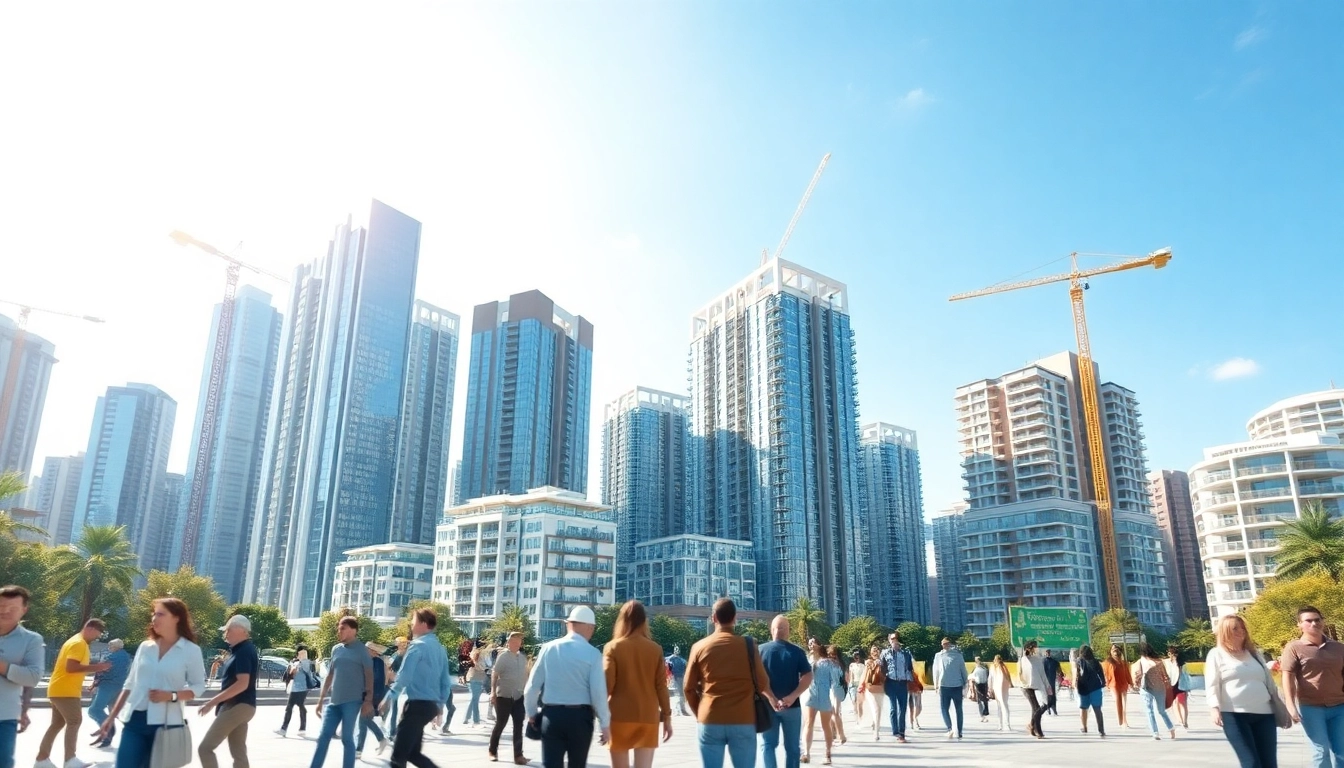Introduction to International Real Estate Development
As global economies become more interconnected, the domain of international real estate development emerges as a vibrant field, offering vast opportunities for investors, developers, and urban planners alike. This complex landscape entails not just the construction of buildings, but a multifaceted approach involving intricate planning, cross-border investments, and a keen understanding of international markets. As we delve deeper into this subject, we will explore its definition, significance, current trends, key stakeholders, challenges, and prospective future developments.
Defining International Real Estate Development
International real estate development refers to the process of developing properties for commercial, residential, or mixed-use purposes across national borders. This process encompasses various stages, including the acquisition of land, planning, design, financing, construction, and eventual sales or leasing of the developed properties. Unlike traditional real estate development, which often focuses on local markets, international real estate development requires considerations of diverse regulations, cultural nuances, and market dynamics.
The Importance of Cross-Border Investments
Cross-border investments play a crucial role in international real estate development, as they provide opportunities to access capital from different markets. Investors often seek diversification in their portfolios, and international real estate offers a hedge against local market volatilities. Moreover, global participation can enhance a project’s visibility and encourage collaboration across various sectors.
Current Trends and Market Dynamics
The international real estate market is continuously evolving, shaped by technological advancements, demographic shifts, and economic factors. For example, the rise of remote work has influenced demand for living spaces in different geographical locations, propelling the development of residential properties in emerging markets. Additionally, sustainability has taken center stage as developers aim to create environmentally friendly buildings, integrating green technologies that appeal to the modern consumer.
Key Players in International Real Estate Development
Identifying Stakeholders and Their Roles
The landscape of international real estate development involves a variety of stakeholders, including developers, investors, government entities, consultants, and contractors. Each player has a unique role, supporting the development process through financing, regulatory compliance, project management, and operational oversight. Understanding these roles is essential for navigating the complexities of international projects and ensuring successful outcomes.
How Government Policies Impact Development
Government regulations significantly influence the landscape of international real estate development. Policies governing zoning, taxation, and environmental impact assessments can vary widely between countries, making it essential for developers to comprehend local laws and regulations. Engaging with local authorities and legal experts can facilitate smoother project progress and help mitigate the risks associated with regulatory non-compliance.
Collaborations with Local Enterprises
Collaborating with local businesses and experts is vital for successful international real estate development. Local enterprises provide invaluable insights into market conditions, cultural sensitivities, and consumer preferences. Additionally, partnerships can enhance credibility and foster a sense of community ownership, which is crucial for long-term project success.
Challenges in International Real Estate Development
Regulatory Hurdles Across Borders
Navigating the complex web of international regulations can present significant challenges for developers. Each country has its own legal frameworks governing real estate transactions, investments, and development processes. Failing to understand these regulations can lead to costly delays and project cancellations, making thorough legal due diligence and local collaboration imperative.
Cultural Considerations in Development Projects
Cultural differences can greatly influence the success of international real estate projects. Developers must be aware of local customs, values, and traditions that may impact design, marketing, and community acceptance of a project. Respecting these cultural differences and incorporating them into development plans can lead to enhanced community engagement and project sustainability.
Economic Fluctuations and Their Effects
Economic instability in any part of the world can pose challenges to international real estate development. Factors such as currency fluctuations, inflation rates, and political unrest can undermine investor confidence and affect market demand. Conducting comprehensive economic analyses and adopting flexible strategies can help mitigate these risks and provide stability during turbulent times.
Best Practices for Successful International Real Estate Development
Conducting Comprehensive Market Research
Thorough market research is foundational to successful international real estate development. Understanding local market conditions, buyer preferences, and competitive landscapes enables developers to make informed decisions and tailor projects to meet specific community needs. Utilizing surveys, analytics, and professional market reports can provide critical insights that shape project direction.
Utilizing Technology for Project Management
Leveraging technology can enhance efficiency and transparency throughout the development process. Tools such as Building Information Modeling (BIM), geographic information systems (GIS), and project management software facilitate better planning, communication, and resource management. Employing these technologies can lead to cost savings and improved project timelines.
Building Sustainable and Inclusive Communities
As sustainability becomes a global priority, international real estate development must focus on creating communities that are environmentally responsible and socially inclusive. This involves designing buildings that minimize ecological impact, promoting mixed-income housing, and ensuring access to essential services. Engaging with community stakeholders during the planning phases can craft projects that serve diverse populations and foster thriving environments.
Future Prospects for International Real Estate Development
Emerging Markets and Opportunities
The future of international real estate development is rich with potential, especially in emerging markets where urbanization is accelerating. These regions present opportunities for developers to engage in innovative projects that cater to a growing middle class. Investing in infrastructure, education, and services will be crucial in supporting sustainable development in these areas.
Innovations Shaping the Future of Development
Technological innovations are reshaping how real estate projects are conceived and executed. Trends such as smart building technologies, prefabrication, and virtual reality are setting new standards for efficiency, user experience, and environmental sustainability. Embracing these innovations can help developers stay competitive in a rapidly evolving landscape.
Long-term Strategies for Investment Success
Developers must adopt long-term strategies to ensure sustained success in international real estate development. This includes diversified investment portfolios, strong risk management practices, and an adaptive approach to changing market dynamics. Establishing strong relationships with local stakeholders and consistently delivering value will create a foundation for ongoing success.







